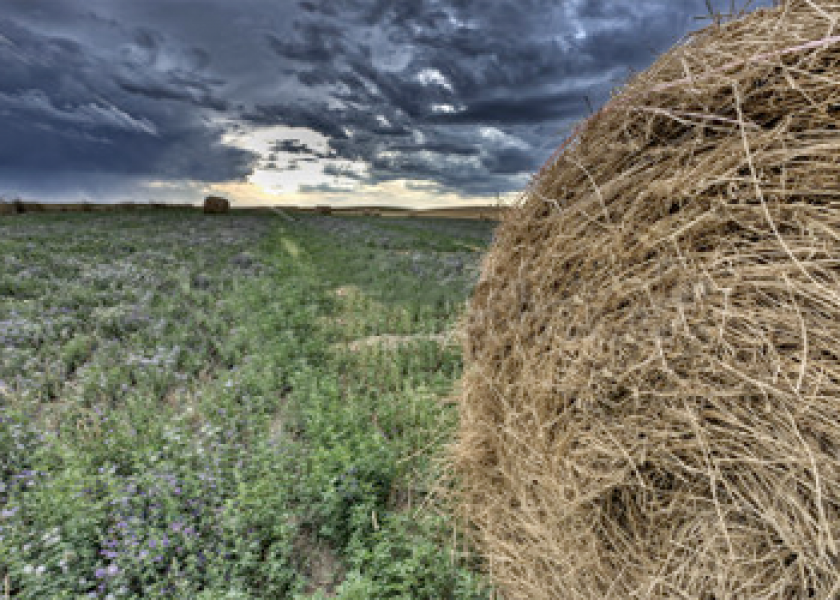Alfalfa Production and Pest Management in South Dakota

Long term alfalfa productivity depends on successful stand establishment.
By: Karla Hernandez, SDSU Extension Forages Field Specialist
Achieving a profitable stand of alfalfa is the result of proper field selection utilizing proven production practices to ensure germination and establishment. Scouting fields for insects such as potato leafhopper and alfalfa weevil is also critical.
Planting Alfalfa
Failure to successfully establish alfalfa could be expensive as it may lead to soil erosion. Some considerations for planting alfalfa include: (1) seedbed preparation; (2) seeding dates; (3) seeding depth (4) seeding rate; (5) whether or not to seed with a companion crop; (6) 100% alfalfa vs. alfalfa-grass mixtures.
- Seedbed preparation - having a firm seedbed is a critical step to ensure good germination of alfalfa seed. Firm seedbeds reduce the possibility of planting too deep and will help hold moisture closer to the surface. Packing the soil will help insure a firm seedbed and good soil moisture retention.
- Seeding dates - determining when to plant alfalfa depends on several factors such as soil moisture and cropping practices. Alfalfa should be seeded between mid-April to mid-May for best results in South Dakota.
- Seeding depth - seed should be covered with enough soil to provide moist conditions for germination. Seed placement of ¼ to ½ inch deep is appropriate on most soils.
- Seeding rates - from 10 to 25 lb seed/acre.
- Seeding with or without a companion crop - seeding alfalfa with a companion crop such as annual ryegrass, oats, spring barley, or spring triticale can help to minimize weed competition during establishment. However, planting alfalfa without a companion crop allows producers to harvest more alfalfa with higher quality in the seeding year.
- 100% alfalfa vs. alfalfa-grass mixtures - pure stands of alfalfa will produce the highest quality forage and for that reason has the highest demand from the dairy industry. Other producers whose animals’ nutrient requirements are lower may be interested in using alfalfa/grass blends to take advantage of improved persistency while still meeting the nutrient requirements of livestock. Alfalfa-grass mixtures also offer some advantages such as reduced weed pressure and soil erosion.
Alfalfa Production and Pest Management in South Dakota
There are several things to consider to produce alfalfa and manage its pests in South Dakota. Below you will find a presentation for this year’s Pesticide Applicator Training (PAT). This is a guide for things to consider for alfalfa production and how to minimize insect infestation that will affect yield and forage quality.







